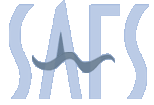UW Aquatic & Fishery Sciences Quantitative Seminar
Jennifer Lang
School of Aquatic and Fishery Sciences
A wreck or not a wreck? That is the question: Creating baselines and identifying anomalies in seabird carcass encounter rates
Abstract
Beached bird survey data have commonly been used as proxies for seabird mortality to assess the impacts of catastrophic oil spills, harmful algal blooms, and extreme weather events on at-sea or nearshore avian populations. The aftermath of these extreme, abnormal events have been documented as "seabird wrecks" due to the magnified number of carcasses encountered. Although "seabird wrecks" describe events when more carcasses are found on a beach than normal, there has yet to be an examination of the "normal" patterns of beached bird observations across a year. Using beached bird data collected by participants of the citizen science program, the Coastal Observation and Seabird Survey Team (COASST), I modeled the baselines, or "normal" patterns, of carcass encounter rate using generalized additive models and identified wreck events as statistically anomalous observations. I tested the hypothesis that carcasses found in wreck events are significantly different in body condition and location found on the beach from carcasses found in surveys conducted on the same site and month when a wreck did not occur. Evaluating body condition and where carcasses were found may provide alternative ways of identifying wrecks outside of sheer numbers of carcasses. By understanding the baseline pattern of carcass encounter rate and characteristics that may distinguish wrecks from normal surveys, we can create tools to better identify wrecks on a local scale.

